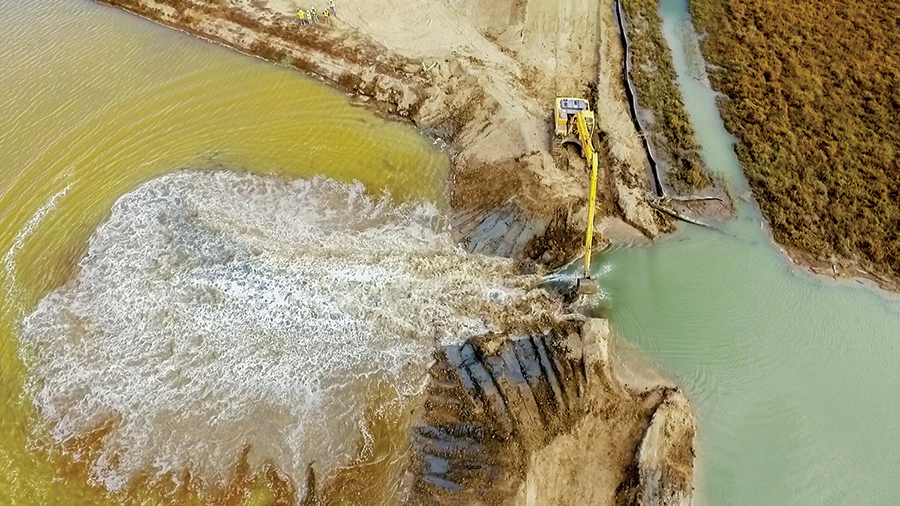
Last October, an excavator breached an old levee at Sears Point to initiate restoration of farmland back to tidal marsh. Photo courtesy Sonoma Land Trust/Corby Hines.
Making matters worse, sea level rise will also weaken the Bay Area’s resilience to floods. Tidal marshes edging the bay take the oomph out of waves and soak up water like sponges. However, according to a 2015 State Coastal Conservancy-led report, we stand to lose most of this natural flood protection to rising seas. The cost of an extreme storm to the Bay Area is estimated at $10 billion.